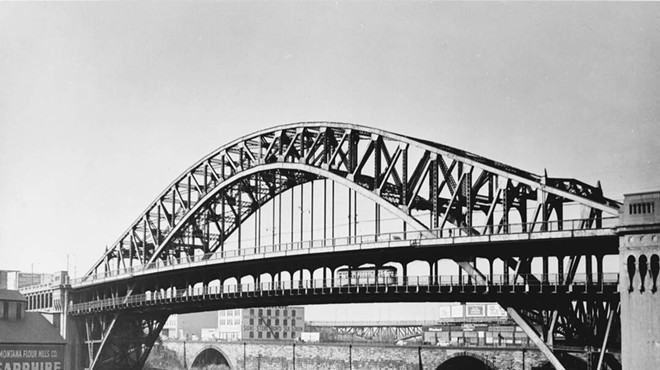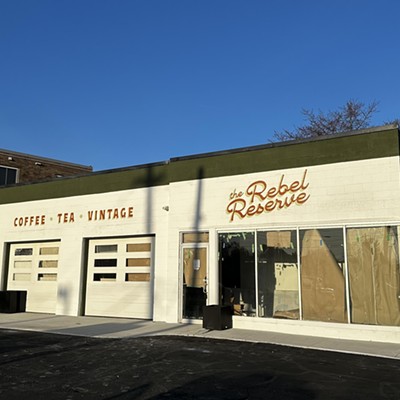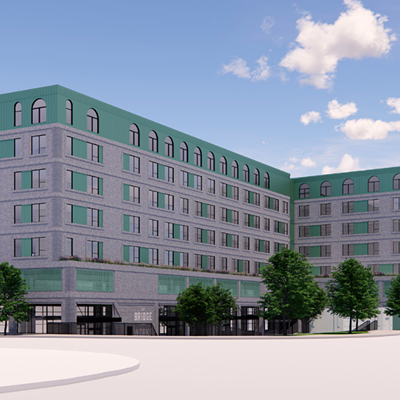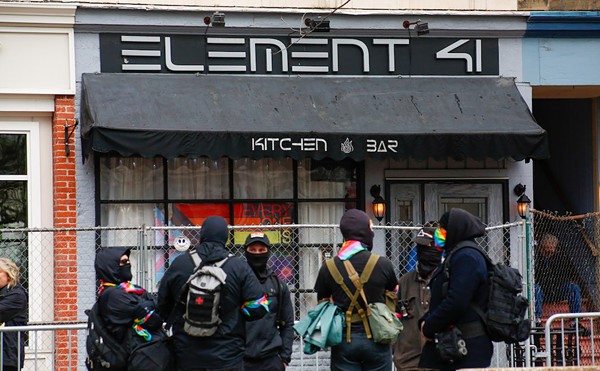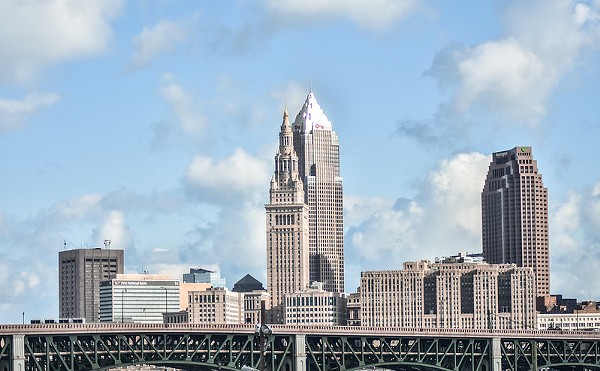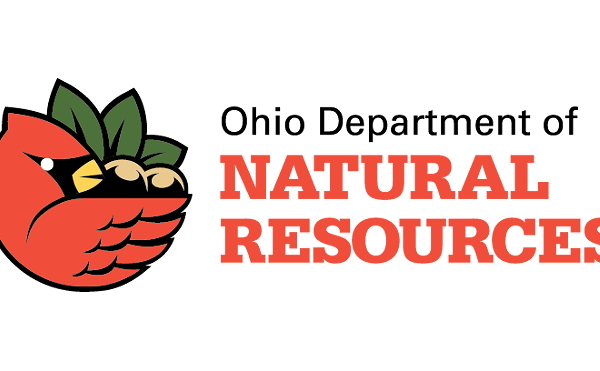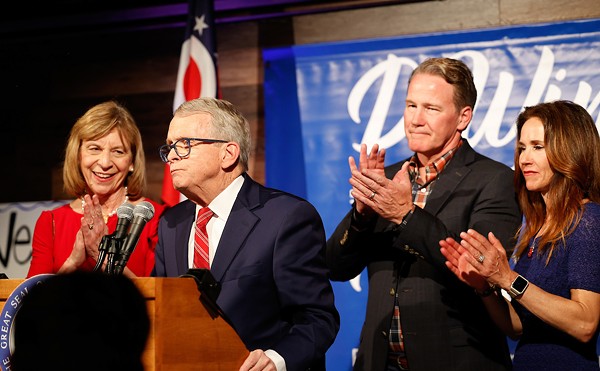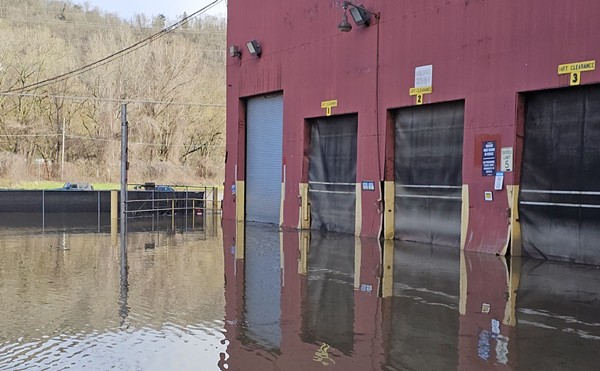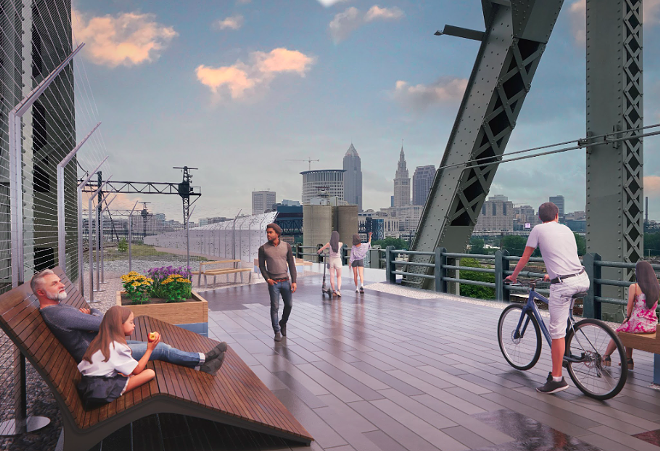
Lennie Stover wakes up every morning driven, one could say, by another color: green.
It's Stover, a financial-advisor-turned-trail-devotee, who collaborated with the Metroparks to bring the first two phases of the Redline Greenway, that big 'J' of pathway that hugs the RTA's most popular train line, to life.
And since May 2021, when the Greenway opened to fanfare, Stover has redirected his daily energy to what could be his public space pièce de résistance: a third, final phase of the Greenway that runs atop and along side the Viaduct that carries Red Line trains into Terminal Tower.
Or, as Stover's been avidly pitching it to volunteers and hopeful investors in the past 15 years: The Skywalk, the "highest elevated greenway in America on an active rail line."
"I'm talking something beyond what an average trail would be so we can make something that's truly spectacular," Stover, 67, said on a recent tour of the bridge where said Skywalk could be. "I mean, like the High Line in New York or the Promenade Plant in Paris."
Although Stover garnered nearly unanimous backing with the Metroparks and various partners for the Greenway's first iteration—which connects the Michael Zone Recreation Center at West 65 St. and the RTA station at West 25th—there seems to be, according to its brainchild, a lot less support for its most daring leg.
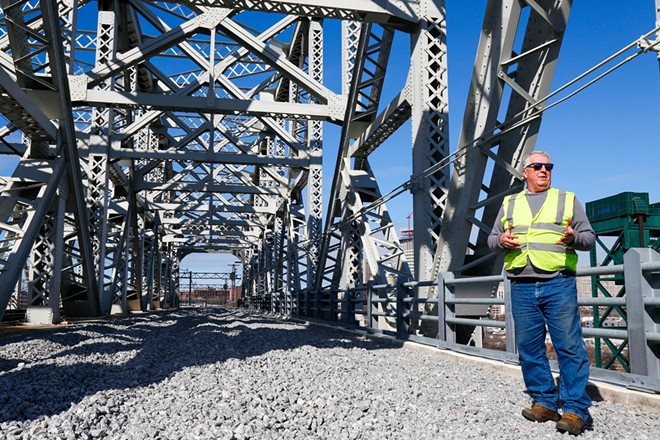
What began as a pipe dream by three Cleveland Rotary Club members in their nineties grew gradually into a Skywalk concept Stover started exploring as a certified public accountant in the early 1990s.
In 2009, after leaving a leadership role at a financial consulting firm, Stover pursued fundraising for his Greenway idea in earnest, leaving the Skywalk for its penultimate phase. A decade later, though Stover had drummed up intrigue—he claims to have had a thousand volunteers for clean-up in 2018—solid funding for what could be the Greenway's most ambitious phase lingered. Not a centimeter of the trail past 25th has been touched.
As for the RTA, Stover has a more complicated relationship there. Unlike first phases of the Greenway, the Skywalk would involve building platforms, with outdoor furniture and flower boxes, close by Red Line track. And a long portion over the Viaduct would include, Stover predicts, using a cantilevered walkway fixed to its southern edge.
"I mean, the first thing RTA ever said to me is we don't do [this]. And I get that that's not their mission," Stover recalled, as a Red Line train car roared by to his left. "But then they started realizing that nationally, multimodal transportation, being able to ride your bike—it was all about the last mile. How do I get to the train? How do I get to the bus?"
When reached for comment, a spokesperson for the RTA noted no firm plans for involvement in the project.

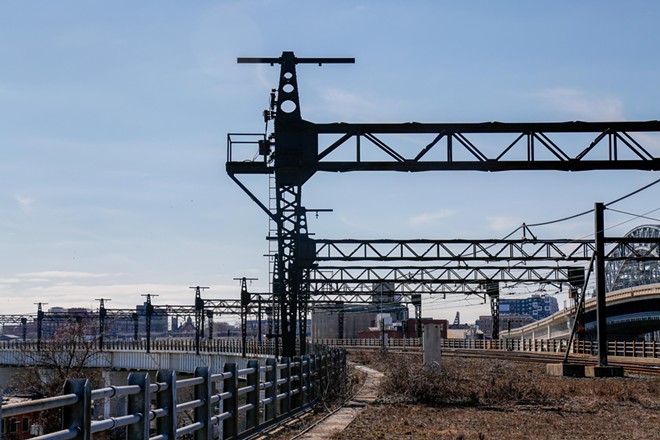
As for funding the study to prove, from an engineer's standpoint, that such cantilevered walkway, or a raised platform at the bridge's apogee, can realistically be built safely, Stover's been buddying up lately with the Trust for Public Land. He believes in general that a good dent of the feasibility study, and construction overall, might be bankrolled by private donors and local foundations.
"We're working through what that would entail, and what that would look like," Sean Terry, the Ohio State Director of the Trust for Public Land, told Scene in a call on Friday.
As for the Skywalk's study being kickstarted this spring? "Possibly," Terry said. "But I can't put an assurance on that now."
Like the High Line in Manhattan, a lodestar for Stover, finishing the Skywalk would undoubtedly bring raised property values alongside its reach from West 25th up to Downtown's southwest side.
If funded sooner rather than later, the Greenway's completion would have a rising tide effect with similar urban projects—the Irishtown Bend Park project to the north, the "Low Line" Park to the northeast and the greening of the parking lots underneath the Viaduct that will be, come 2025, Canal Basin Park.
And, like with the High Line's aftermath, Stover anticipates a zoning code alteration by City Planning, along with similar tension between apartment dwellers and the public eager to check out Skywalk's awesome views of Cleveland's skyline.
"I mean, that's a very New York-centric issue," Stover said. "But I'd love to have some of those problems here."
Stover stopped near the southernmost side of the bridge's truss, where nearly every major piece of development in Downtown Cleveland could be taken in—the rising Thunderbird Apartments on Scranton Peninsula to the east, the tip of the Sherwin-Williams HQ tower to the northeast.
"We've got the Cleveland script sign over at Edgewater, we have the one down in Tremont," he said. Stover took a breath, placed his hands on the railing. "But when you have a guest or a family member from out of town, where do you have to take them?
"This is going to be one of those spots, if not the spot, in my opinion."
Follow us: Apple News | Google News | NewsBreak | Reddit | Instagram | Facebook | Twitter | Or sign up for our RSS Feed

